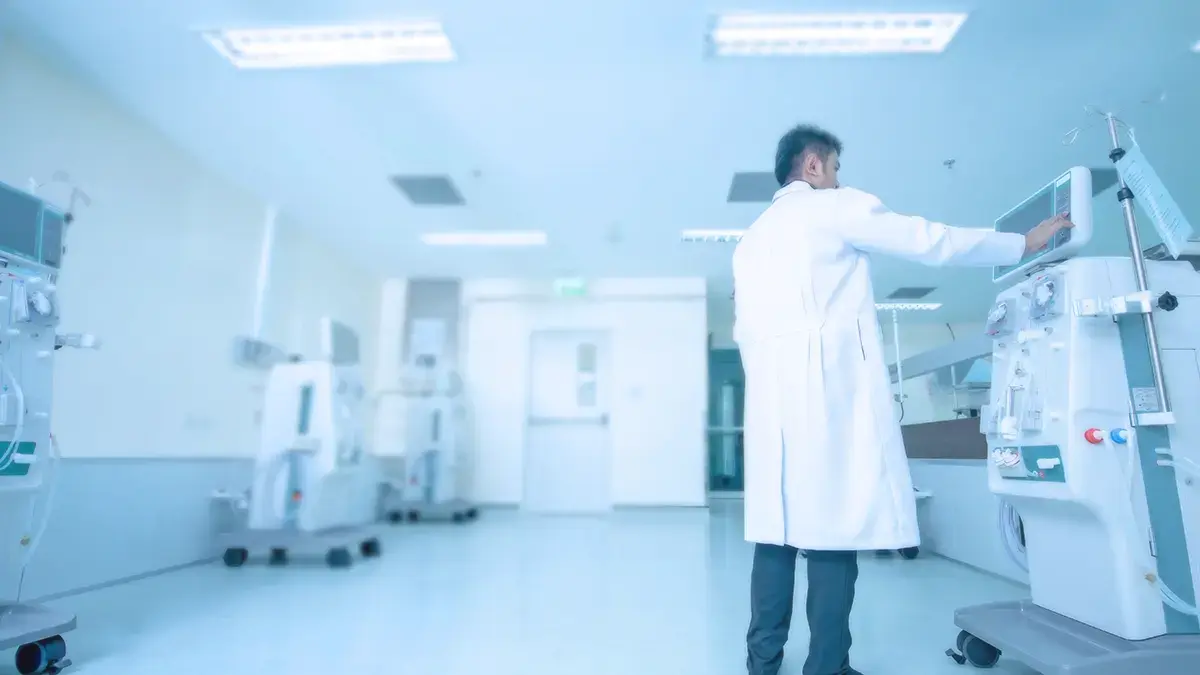Supporting Patient Care Through Precise Dialysis Machine Calibration

Introduction
Dialysis machines are vital life-saving equipment for patients with kidney failure. These instruments must deliver precise levels of dialysate composition, temperature, and pressure to ensure safe and effective therapy. Dialysis machine calibration ensures that these critical parameters remain accurate and consistent. However, the meters calibrating dialysis machines must also undergo regular factory calibration to maintain reliable calibration. Even minor measurement discrepancies due to drift over time can compromise patient safety and treatment outcomes.
The Role of Calibration in Hemodialysis
Calibration is the process of adjusting and verifying medical equipment to ensure accuracy. In hemodialysis, precise calibration directly impacts:
- Dialysate composition: Ensuring the correct balance of electrolytes to prevent complications such as hyperkalemia or metabolic acidosis.
- Temperature control: Preventing overheating or underheating, which can lead to patient discomfort or adverse reactions.
- Fluid removal accuracy: Maintaining the correct ultrafiltration rate to prevent dehydration or fluid overload.
The calibration process connects the dialysis machine to the National Institute of Standards and Technology (NIST) traceable standards, ensuring compliance with regulatory requirements. Proper calibration also aligns machines with FDA-cleared medical device guidelines, reinforcing accuracy and reliability. This is why using OEM-calibrated meters—aligned with FDA and ISO standards—is essential.
How Calibration Affects Patient Safety and Treatment Efficacy
Regular calibration ensures dialysis machines deliver treatment as prescribed. When calibration is neglected, patients are at risk of:
- Electrolyte imbalances lead to life-threatening conditions such as cardiac arrhythmias.
- Blood pressure fluctuations from incorrect ultrafiltration rates.
- Ineffective toxin removal, reducing dialysis efficacy and negatively impacting patient outcomes.
Dialysis professionals can ensure machines function correctly and deliver safe treatment by using properly calibrated meters, such as the 90XL Technician Dialysate Meter and pHoenix XL Reference Meter.
How Often Should Dialysis Machine Calibration Be Performed?
Calibration frequency depends on manufacturer recommendations, regulatory guidelines, and clinic policies. However, best practices include:
- Daily verification of key parameters such as conductivity, temperature, and pH before patient treatments.
- Monthly calibration checks using an external, factory-calibrated meter.
- Annual factory calibration of the calibration meters themselves to maintain NIST-traceable accuracy.
Mesa Labs offers factory calibration services to ensure compliance and reliability and prevent drift in measurement accuracy over time. Drift refers to the gradual deviation of a device’s readings from true values due to component aging or environmental factors.
Best Methods for Dialysis Machine Calibration
To achieve the highest accuracy in dialysis machine calibration, technicians and clinicians should follow these best practices:
1. Use NIST-Traceable Calibration Meters
- The 90XL Dialysis Technician Meter provides precise readings of conductivity, temperature, pH, and pressure, ensuring dialysis machines meet regulatory standards.
- The pHoenix XL Reference Meter offers a compact, easy-to-use solution for quick and reliable dialysate measurement.
2. Follow Manufacturer Calibration Protocols
- Always use certified calibration solutions and reference meters for accuracy.
- Document calibration activities for compliance with AAMI, CMS, and FDA regulations.
3. Schedule Regular Factory Calibration for Calibration Meters
- Even the best calibration meters drift over time. Mesa Labs provides factory calibration services to maintain accuracy and regulatory compliance.
- The pHoenix XL features a modular replacement program, allowing clinicians to swap out pre-calibrated modules instead of sending the device for recalibration. This minimizes downtime while maintaining compliance.
Conclusion
Dialysis machine calibration is essential for patient safety and effective treatment. Regular calibration of dialysis machines and the meters used for calibration ensures accuracy, regulatory compliance, and optimal treatment outcomes. Dialysis professionals can confidently maintain machine accuracy by using trusted tools like the 90XL Technician Dialysate Meter and the pHoenix XL Reference Meter. Additionally, factory calibration of these meters with Mesa Labs is vital for long-term reliability. Only OEM calibration ensures full restoration to original performance specs and compliance with strict FDA and ISO standards.
Dialysis centers should regularly calibrate their machines and use factory-calibrated meters to ensure consistent performance and compliance with industry standards.
- Explore the 90XL Dialysis Technician Meter
- Learn more about the pHoenix XL Reference Meter
- Submit your meters for Mesa’s factory calibration services